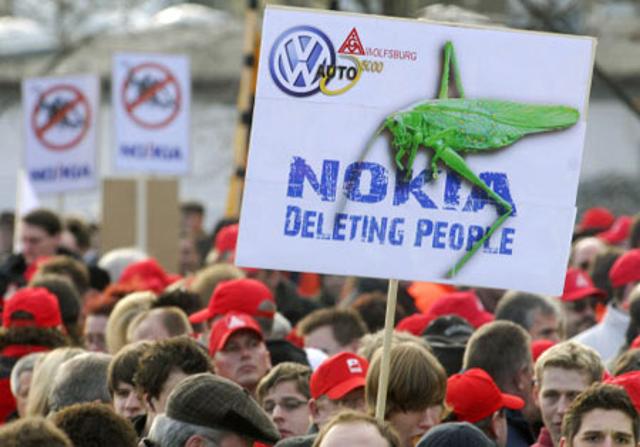
Nokia closes plant in Germany and relocates in Romania
The article tells about the scandal that arose when Nokia announced its plans to relocate one of its plants from Germany to more affordable Romania. That will result in a job loss of 4000 german employees. Nokia management made a decision without informing or consulting with the worker’s unions or their representatives.
According to the coursebook, the company must inform the employees 60 days before the layoff, to enable them to look for a new job. If not informing 60 days in advance the employer must pay the 60-day salary for the employee as a compensation. It seemed to me that the layoff
It seemed to me that the layoff was announced in a timely manner by Nokia, but the issue was that according to the EU laws Nokia was not allowed to make this decision before consulting with the workers union.
Nokia cuts 3500 jobs “to ensure profitability”
Looks like the move from Germany to Romania did not stop Nokia downfall, the next article tells about Nokia reducing its headcount internationally just a few years later. Nokia plans to lay off altogether 3500 employees from different countries, including Finland and USA.
While Nokia the last downsizing created some conflicts between workers unions and the company, this time Nokia is handling the situation with more care, by inviting workers to the meetings to discuss the situation.
Hundreds of Nokia’s outsourced Symbian developers leaving Accenture
The effects of Nokia’s downfall were felt deeply in the consultancy firm Accenture who had accepted the 1200 Nokia workers to work under Accenture company serving Nokia. But now when Nokia is in trouble Accenture don’t have enough work to justify its huge workforce. Instead of laying off people, Accenture has given them the opportunity for voluntarily leave with the benefits package worth of 15-day salary.





